- 8777701917
- info@saikatinfotech.com
- Basirhat W.B
Network Topology
Network topology refers to the arrangement or structure of different elements (links, devices, etc.) in a computer network. It determines how devices in the network are connected to each other, and how data flows between them. The design of the network topology plays a critical role in the network’s performance, reliability, scalability, and maintenance.
Here are the main types of network topologies, along with their descriptions, advantages, and disadvantages:
Each topology has its advantages and trade-offs, and the choice of topology depends on the specific needs of the network, such as cost, scalability, fault tolerance, and maintenance.
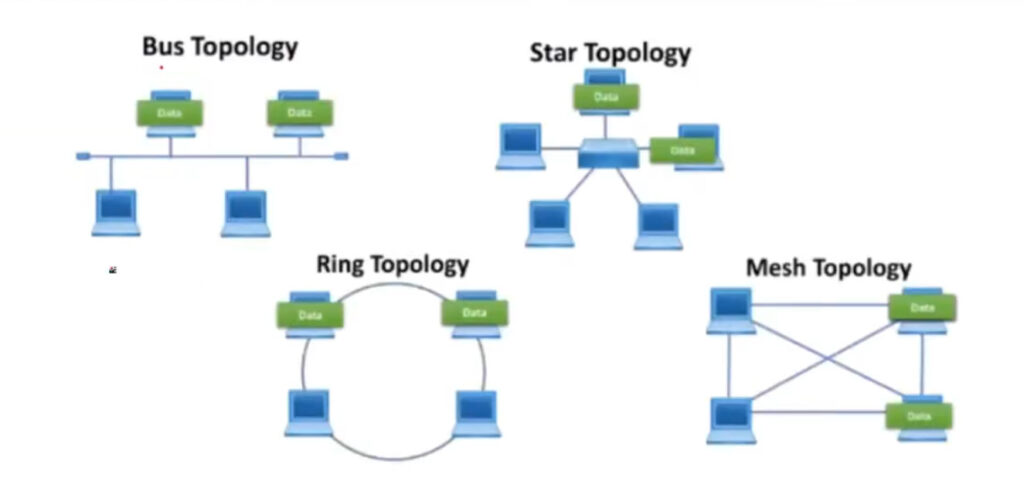
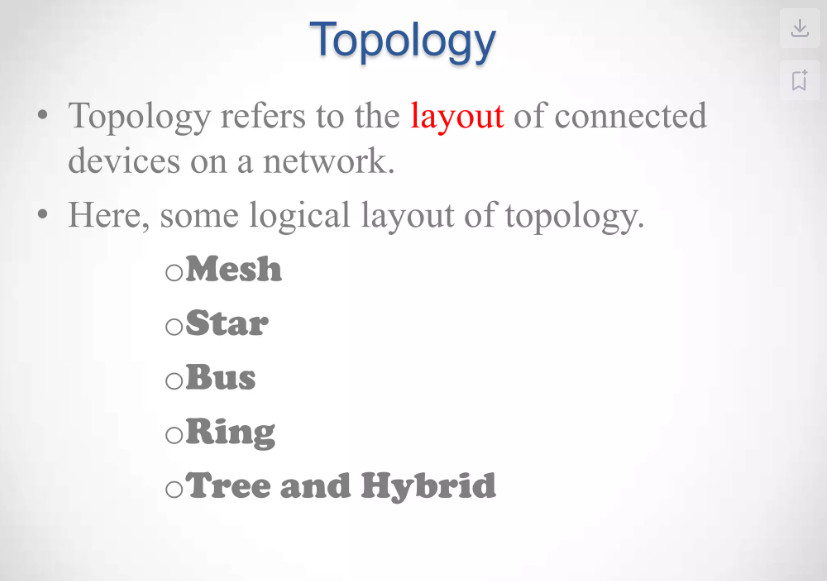
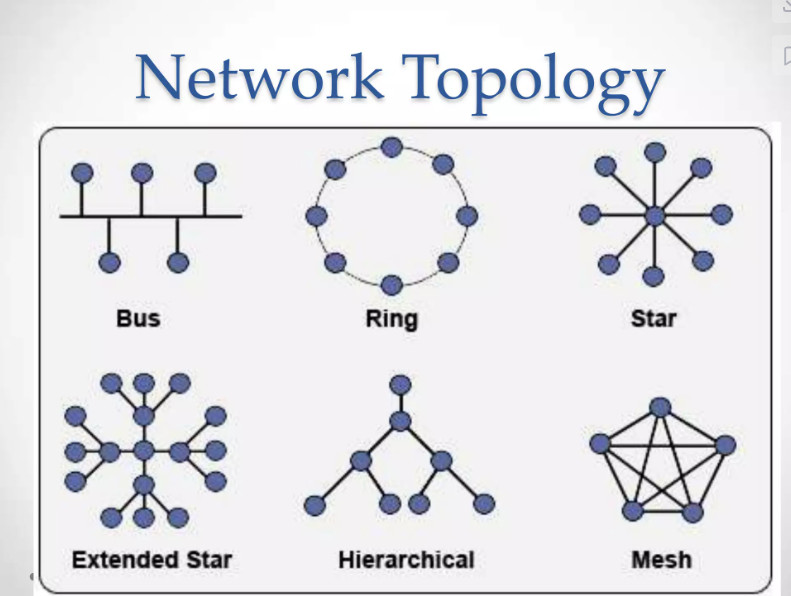
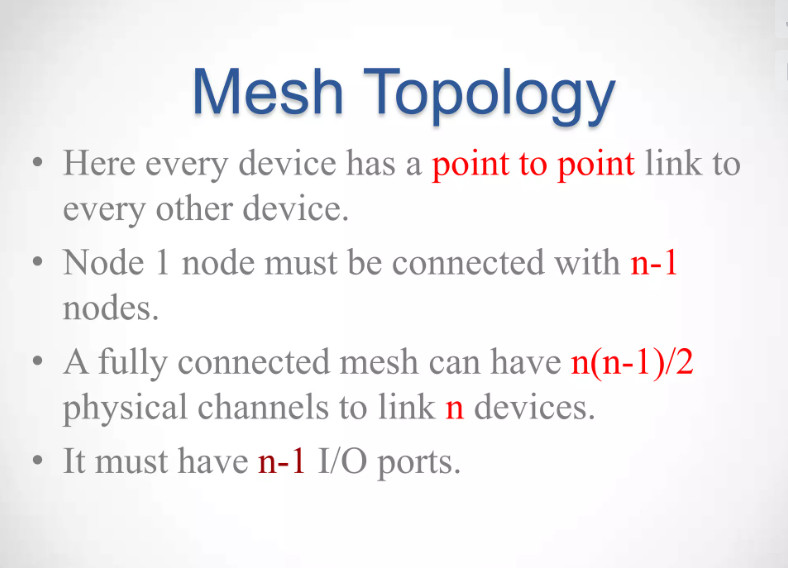
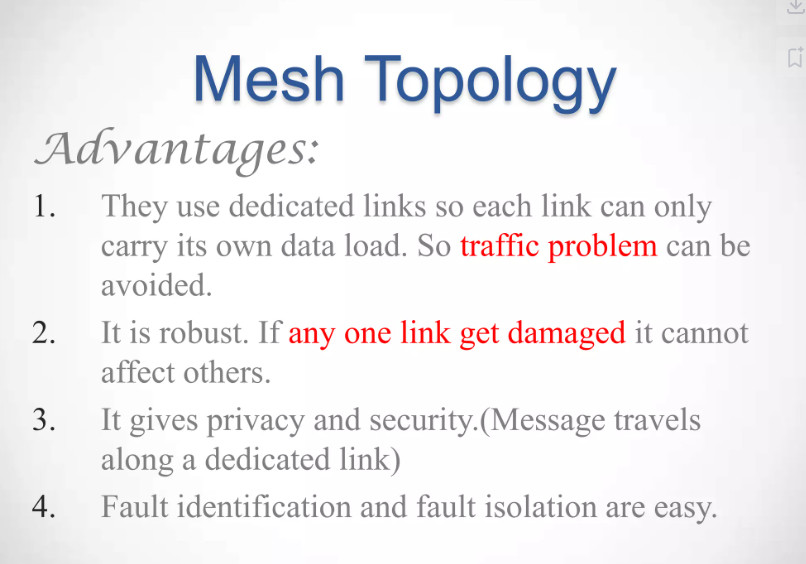

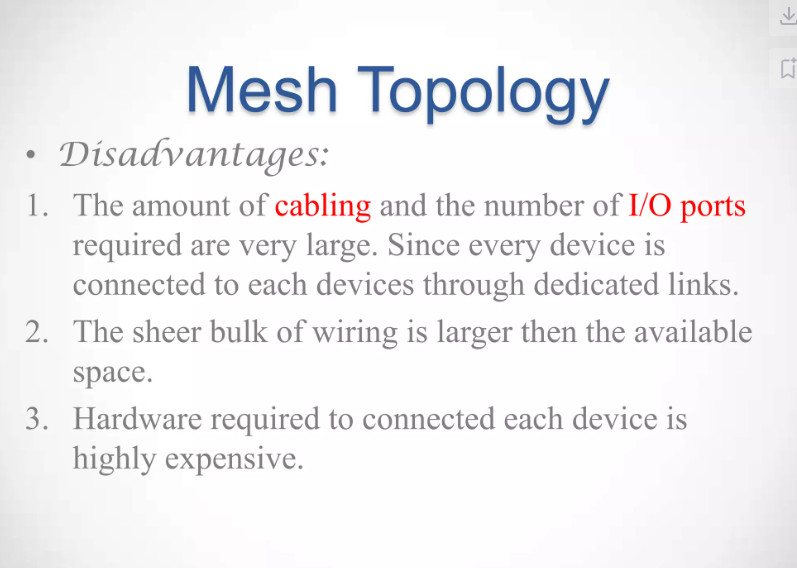
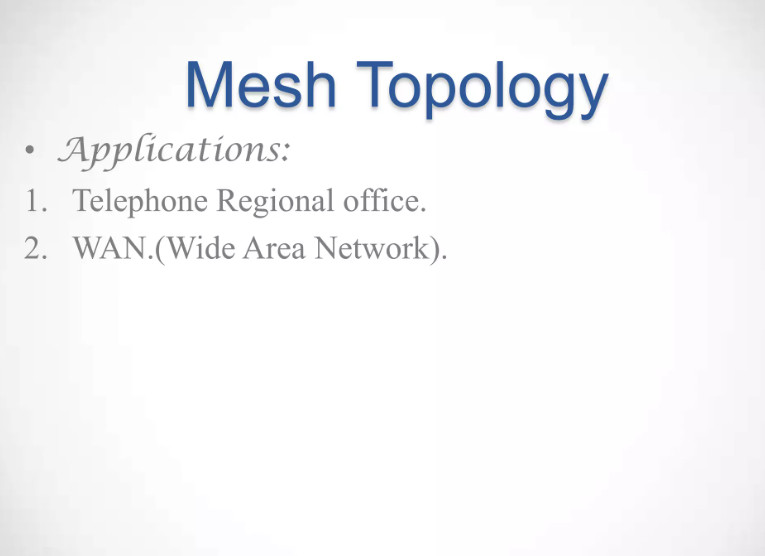

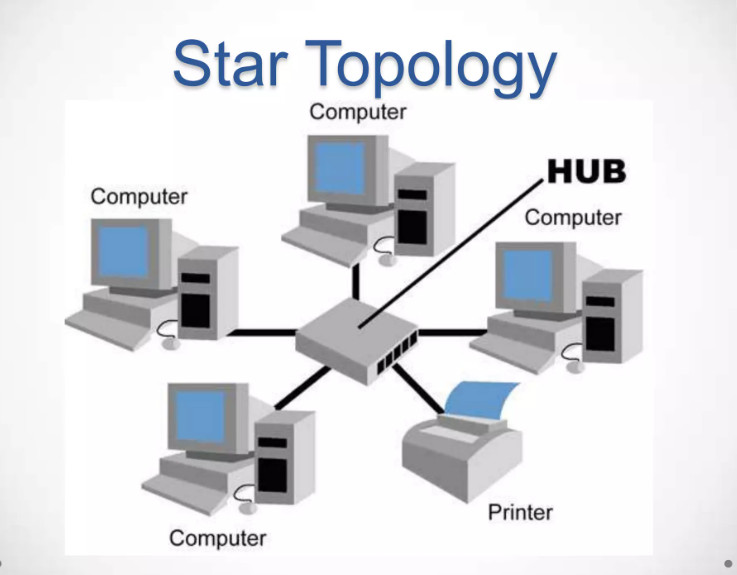
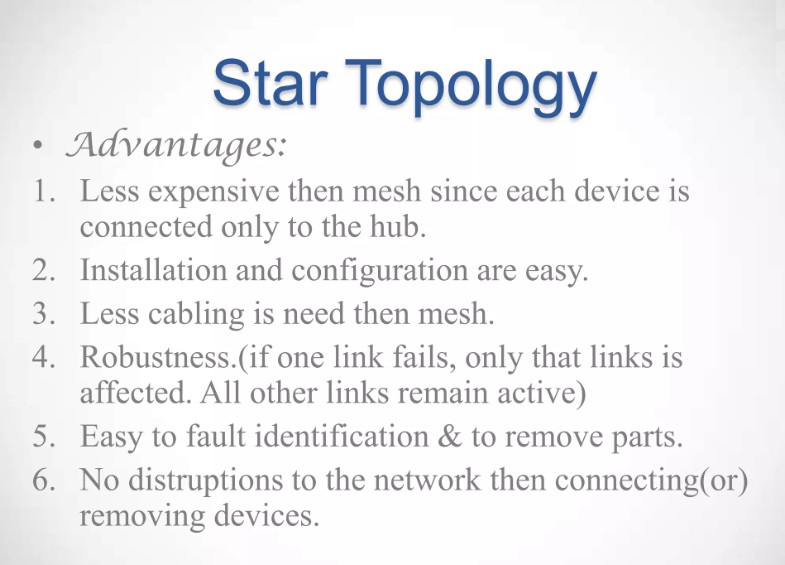
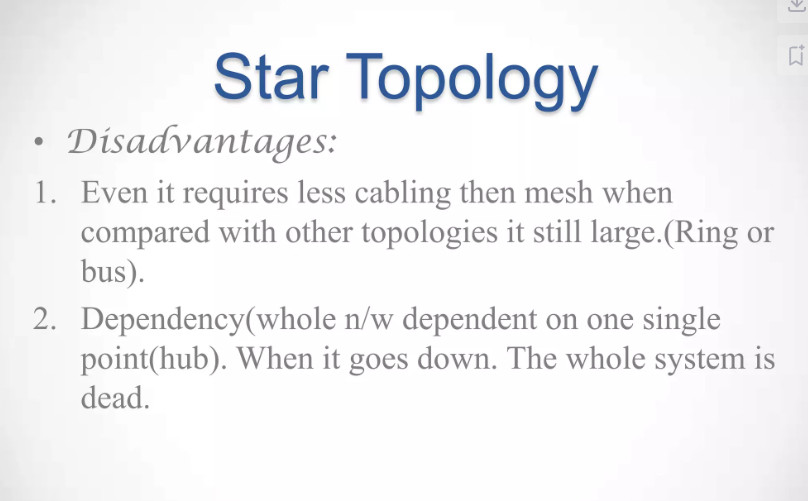
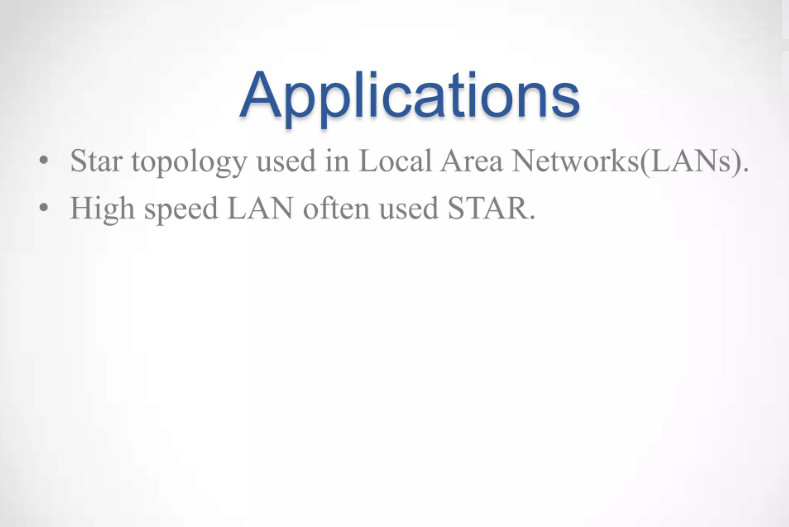
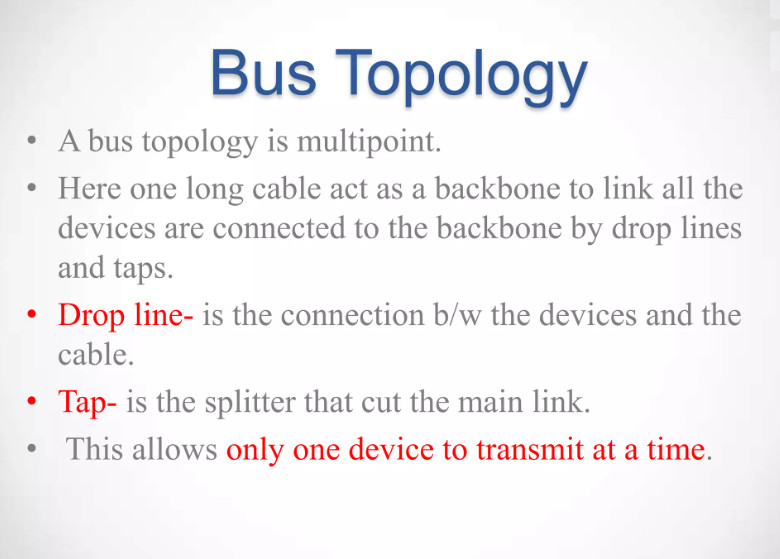
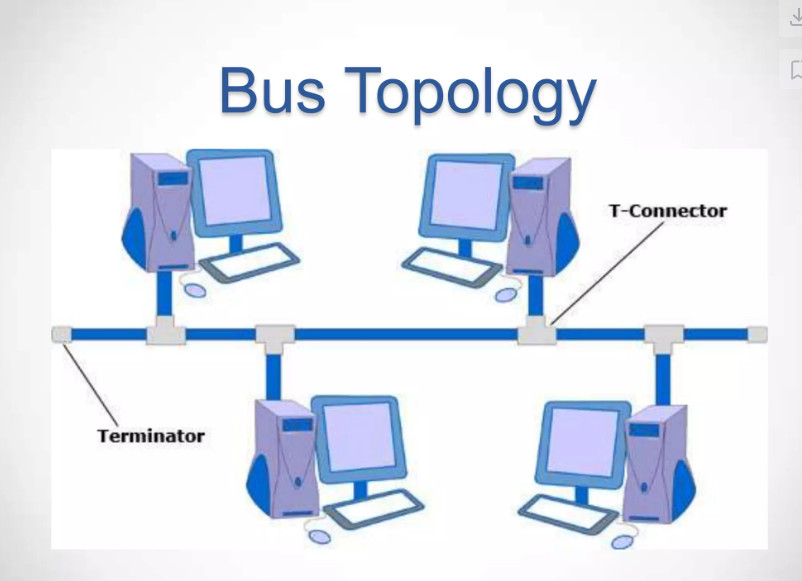
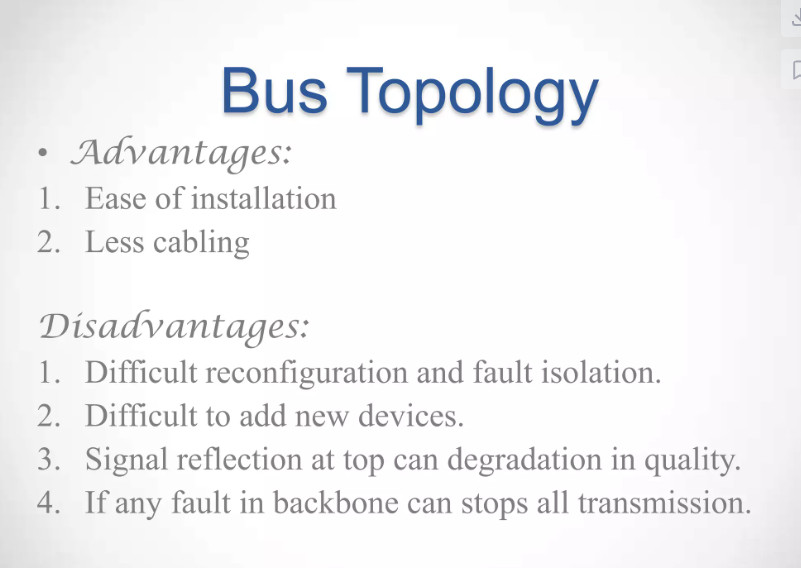
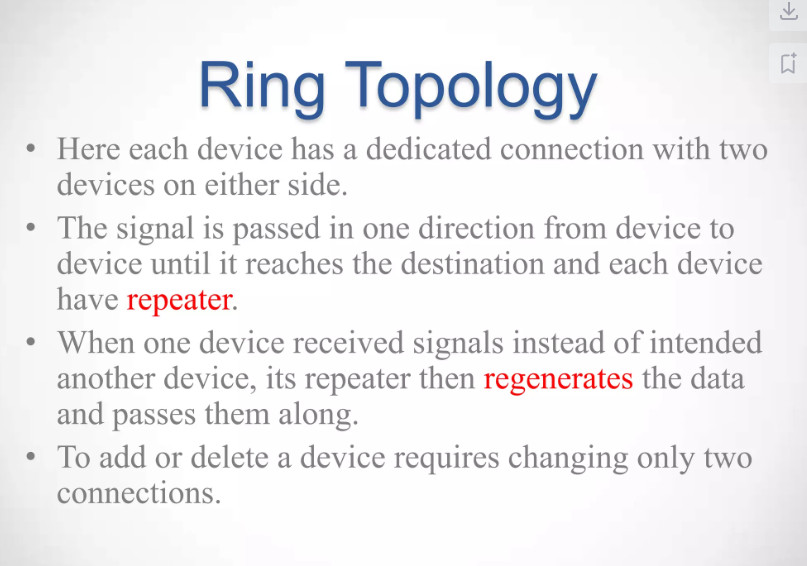

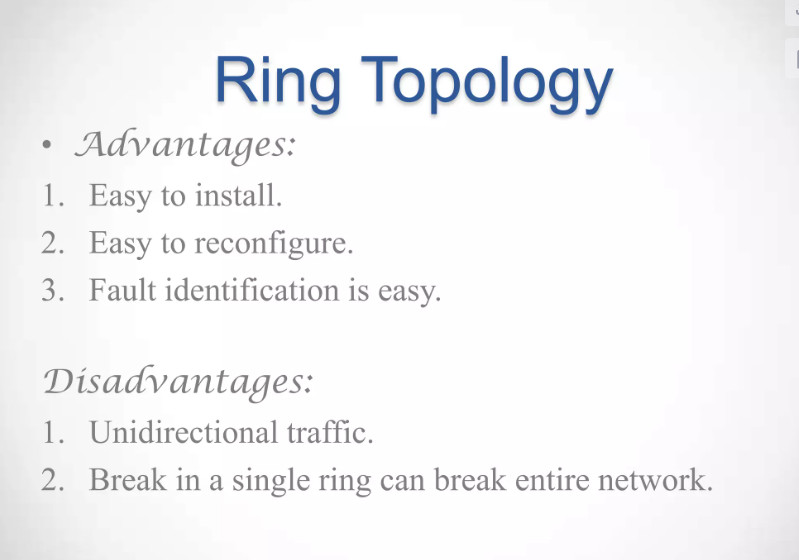
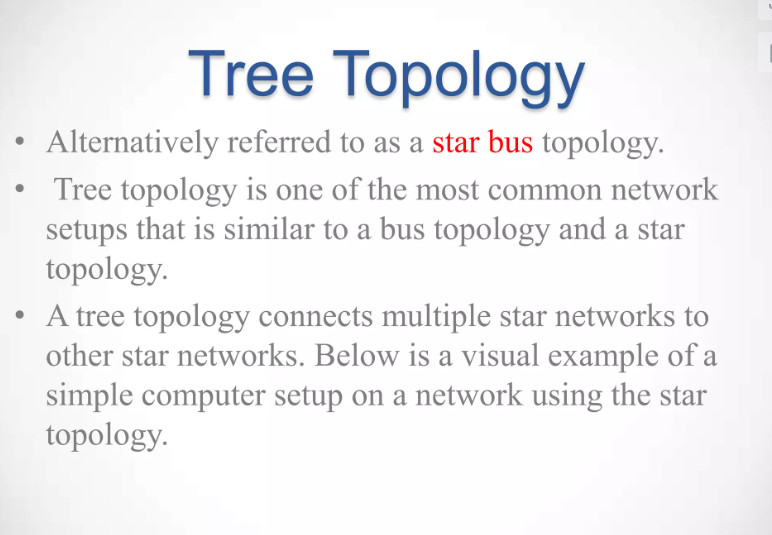
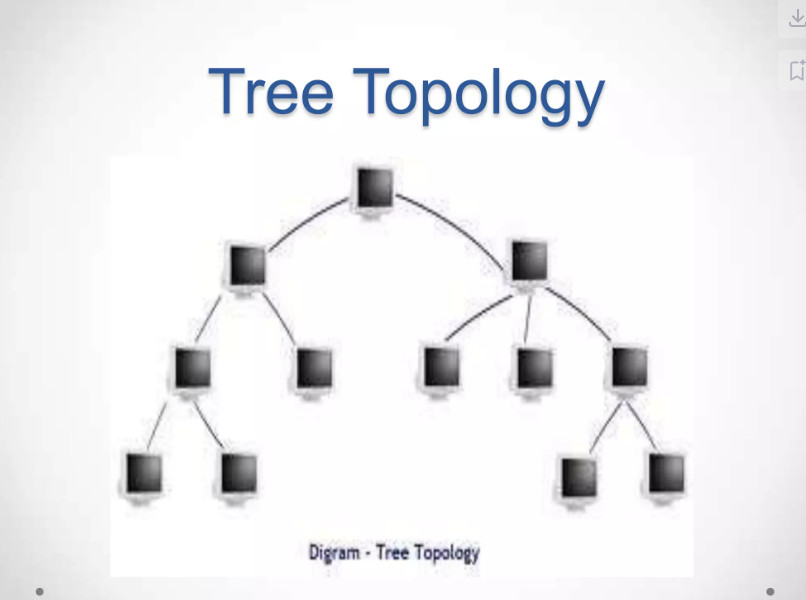
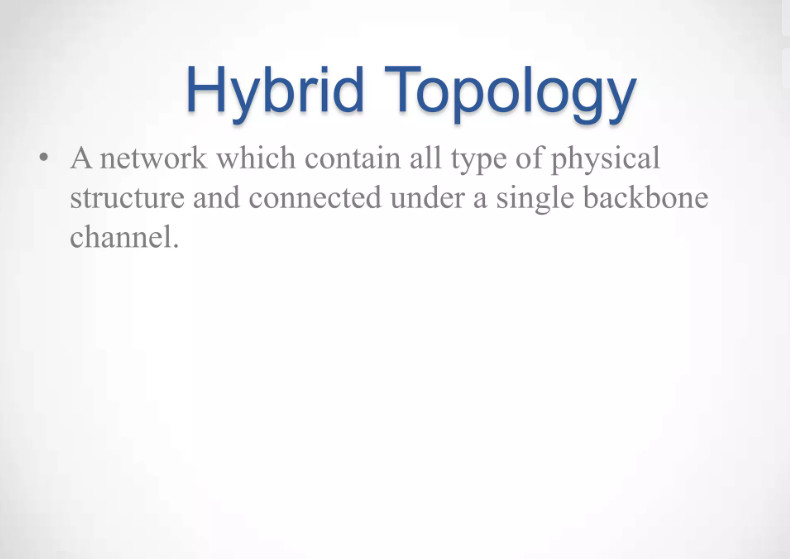
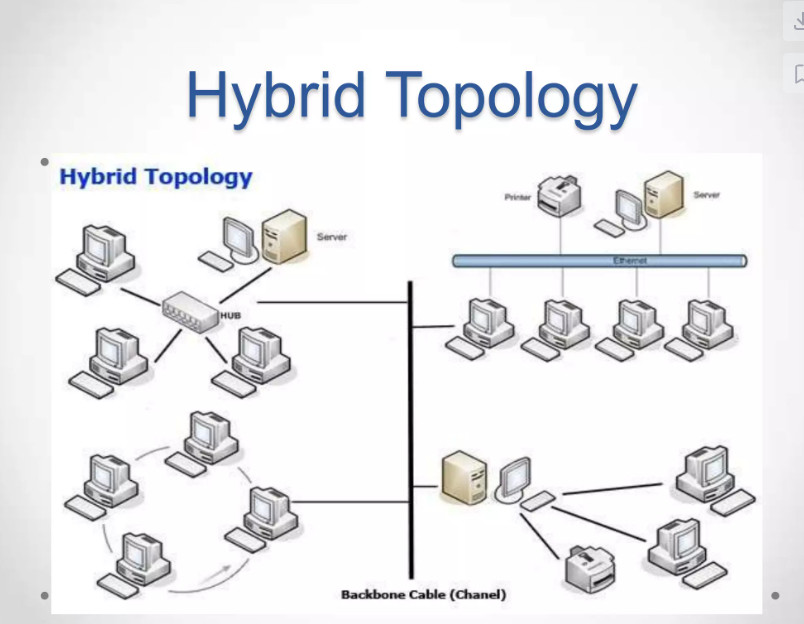
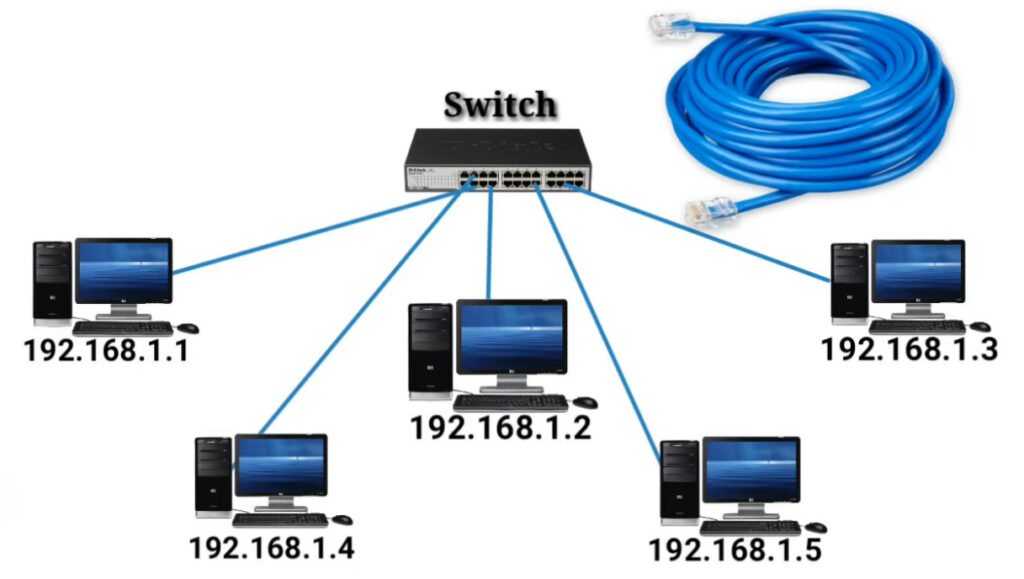
What is a Network Topology?
Network topology refers to the layout and interconnection of devices within a network. It describes how network components like computers, servers, and other devices are connected and communicate with each other.
Network topology is crucial for optimizing network performance and reliability. It defines the arrangement of nodes and connections, which directly impacts data flow efficiency.
A well-structured topology reduces congestion and latency, ensuring smooth data transmission. It also supports scalability, enabling easy integration of new devices without disrupting operations.
Understanding and effectively implementing network topology enhances performance, scalability, and fault tolerance, ensuring reliable communication and efficient data transfer.
Types of Network Topology
There are 7 Types of network topologies in computer networking:
1. Point-to-Point
2. Bus
3. Star
4. Ring
5. Mesh
6. Tree
7. Hybrid
Now let’s discuss these topologies one by one.
1. Point-to-Point Topology
Point-to-point topology is the simplest network configuration, connecting two nodes directly through a dedicated communication link. This setup resembles a direct line between two endpoints, allowing for efficient and fast data transfer.
Think of a telephone call between two people. In a point-to-point topology, like that call, two connected devices communicate directly without interference, sharing the entire bandwidth for high performance and low latency.
Advantages:
● High bandwidth and fast communication speeds.
● Easy to maintain and troubleshoot since only two nodes are involved.
Disadvantages:
● Limited to two devices; expanding the network requires additional links.
● If the connection fails, communication between the two nodes is disrupted.
2. Bus Topology
Imagine a long cable, resembling a bus route, with devices connected along its length. This is the essence of a bus topology. In a bus network, all devices share the same communication channel. Data travels along the cable, and each device checks if the data is intended for it. If so, it accepts the data; otherwise, it ignores it.
Think of a school bus with seats for students. In a bus topology, devices like computers and printers are arranged in a line along a single cable, which serves as their communication pathway, similar to the bus route.
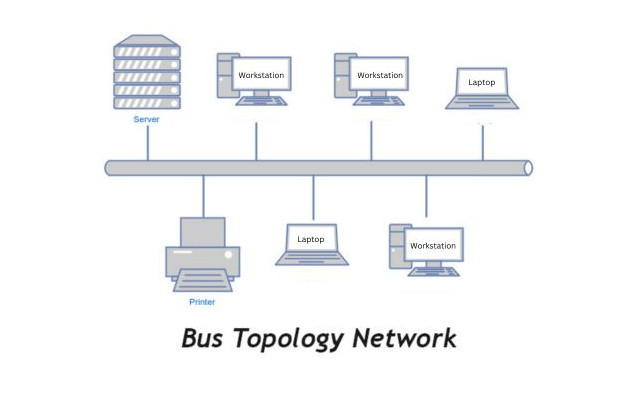
3. Star Topology
In a star topology, each device is connected directly to a central hub or switch. All communication between devices must go through this central point. It’s like a hub-and-spoke model, with the hub being the focal point for data transmission.
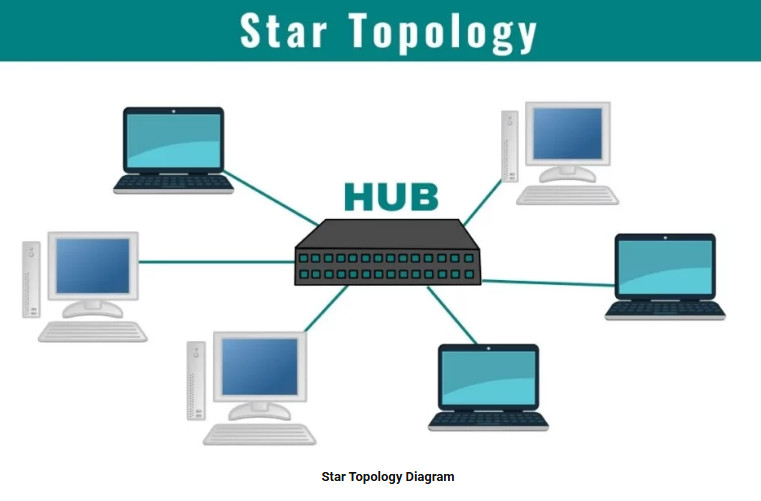
Advantages:
● Easy to install, manage, and troubleshoot.
● Isolates issues to individual connections; a failure in one device doesn’t affect others.
Disadvantages:
● Dependence on the central hub; if it fails, the entire network goes down.
● More cabling is required, making it costlier than bus topology.
4. Ring Topology
In a ring topology, each device is connected to exactly two other devices, forming a closed loop or ring. Data circulates around the ring in one direction. When a device receives data, it processes it and passes it along to the next device until it reaches its destination.
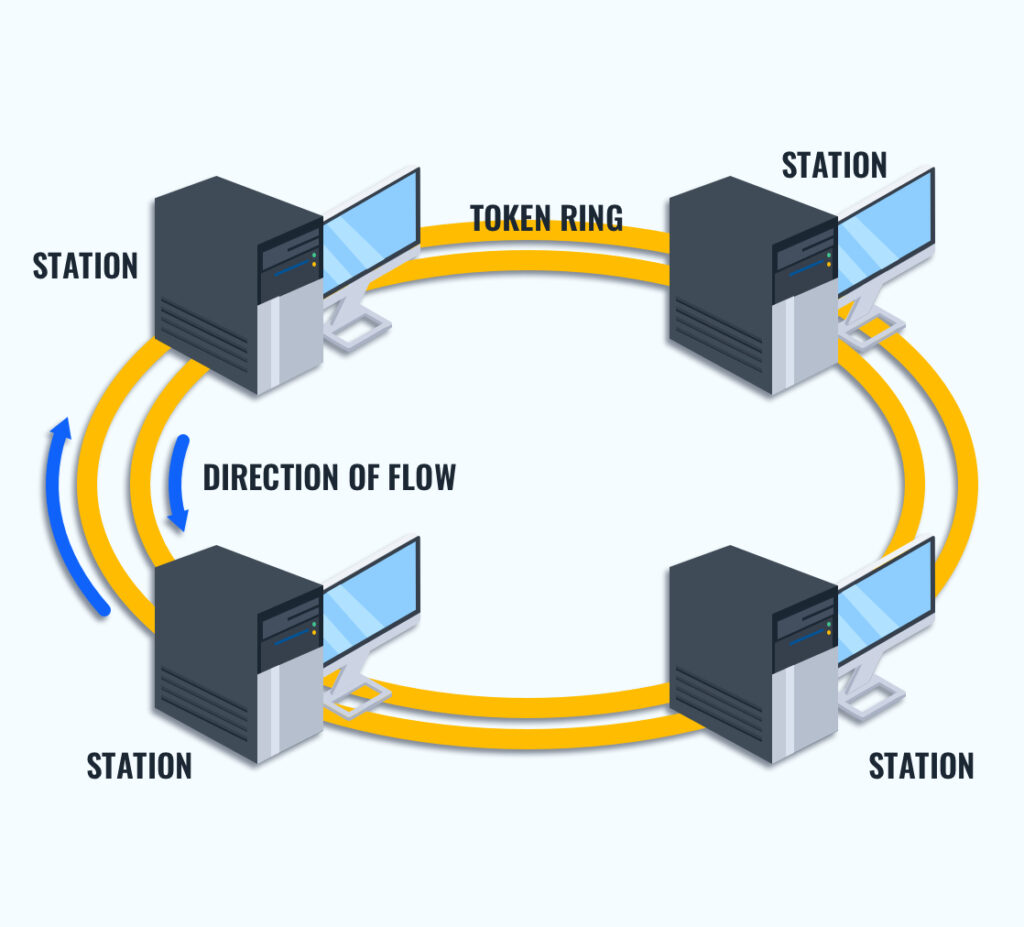
Advantages:
● Even data distribution, as each device has an equal opportunity to transmit.
● Simple and predictable data path.
Disadvantages:
● A break in the ring can disrupt the entire network.
● Adding or removing devices can be complex.
5. Mesh Topology
Mesh topology is like a web of connections, where each device is connected to every other device. This creates redundancy and multiple paths for data to travel. Mesh networks can be either full mesh (every device is connected to every other) or partial mesh (some devices have fewer connections).
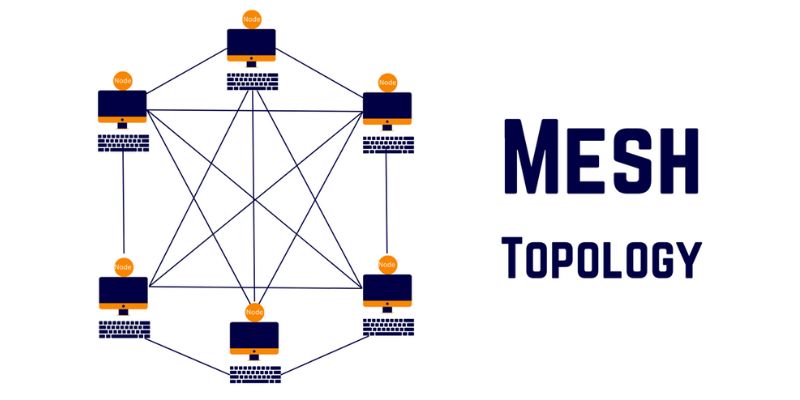
Advantages:
● High redundancy; network remains operational even if some connections fail.
● Scalable and adaptable; can handle a large number of devices.
Disadvantages:
● Expensive due to the numerous cables and ports required.
● Complex to set up and maintain.
6. Tree Topology
A tree topology combines characteristics of star and bus topologies, arranging nodes in a hierarchical structure that resembles a tree. In this layout, multiple star networks are connected to a central bus, allowing for a scalable and organized network design.
Think of a family tree, where each branch represents different family members connected to a common ancestor. Similarly, in a tree topology, the central node acts as the trunk, with branches extending to various sub-nodes.
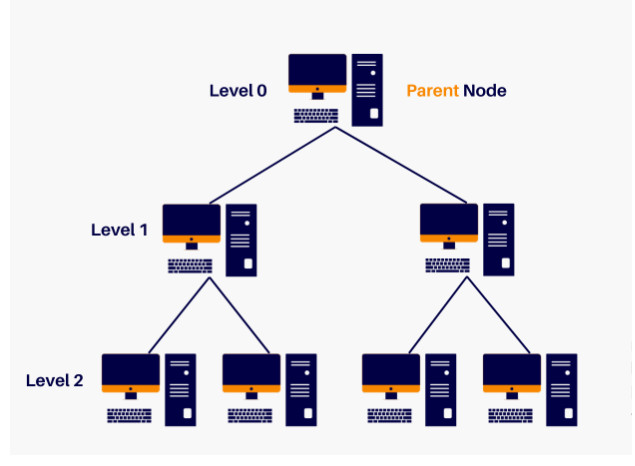
Advantages:
● Scalable and easy to expand by adding new nodes without disrupting the entire network.
● Facilitates better management and organization of devices.
Disadvantages:
● If the central trunk fails, it can disrupt the entire network.
● More complex to configure and maintain compared to simpler topologies.
7. Hybrid Topology
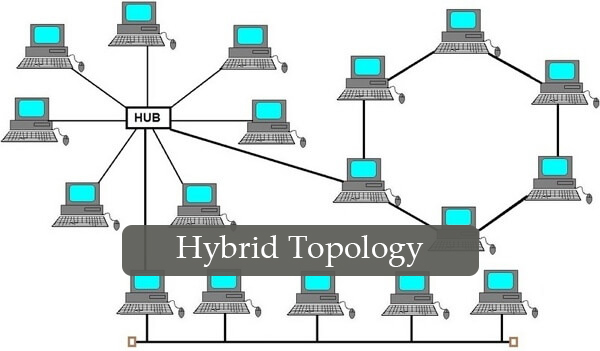
A hybrid topology combines two or more different topologies into a single network. This is often done to harness the strengths of one topology while mitigating its weaknesses. For example, a network might use a star topology for its core infrastructure and a bus topology for a smaller, isolated segment.
Advantages:
● Flexibility to tailor the network to specific needs.
● Enhanced fault tolerance by combining different topologies.
Disadvantages:
● Complexity increases with the number of topologies integrated.
● requires careful planning to ensure smooth operation.
Types of Network Topology and Their Uses
Let’s look at the uses of different topology types to get an understanding of where to use a specific type of topology:
Types of Network Topology and Their Uses
Let’s look at the uses of different topology types to get an understanding of where to use a specific type of topology:
| Topology Type | Description | Common Uses |
|---|---|---|
| Bus Topology | Connects all devices to a single central cable. | Small networks, simple LANs where cost-effectiveness is key. |
| Ring Topology | Devices are connected circularly, with data traveling in one direction. | Applications requiring data integrity, such as token-based networks (e.g., FDDI). |
| Mesh Topology | Each device is interconnected, providing multiple paths for data. | High availability environments like mobile ad hoc networks and air traffic control systems. |
| Star Topology | All devices connect to a central hub or switch. | Modern Ethernet LANs, office networks, and Wi-Fi setups for easier management. |
| Tree Topology | A hierarchical structure combining star and bus topologies. | Large organizations needing a structured layout with easy expansion. |
| Hybrid Topology | Combines multiple topologies for flexibility and scalability. | Complex enterprise networks and backbone infrastructures. |
| Point-to-Point | Direct connection between two nodes. | Dedicated connections like leased lines or direct links between devices. |
What is The Best Type of Network Topology?
The best type of topology depends on the factors you care about the most.
Here are some factors, and the best type of network topology for it.
1. Cost
Best Topologies: Bus and Star
Bus: Inexpensive to implement; ideal for small networks.
Star: Moderate cost; easy to set up and manage.
2. Reliability
Best Topologies: Mesh and Hybrid
Mesh: Highly reliable with multiple connections; if one link fails, others remain operational.
Hybrid: Combines strengths of different topologies, enhancing fault tolerance.
3. Scalability
Best Topologies: Tree and Mesh
Tree: Easily expandable by adding branches without disrupting the network.
Mesh: Scalable but can become complex with many nodes.
4. Performance
Best Topologies: Mesh and Star
Mesh: Offers high bandwidth and redundancy, suitable for critical applications.
Star: Provides good performance for most office networks but relies on the central hub.
Types of Network Topology Architectures
Here are the standard types of network topology architectures used in today’s environment.
1. Two-tier Network Topology
Two-tier network topology is a flat or collapsed core design. It consists of two layers i.e., the access layer and the core layer. In the organizations where network is smaller, and scalability and complexity are not much concern generally adopt this type of architecture. Here is the topology of the two-tier network topology for your reference.
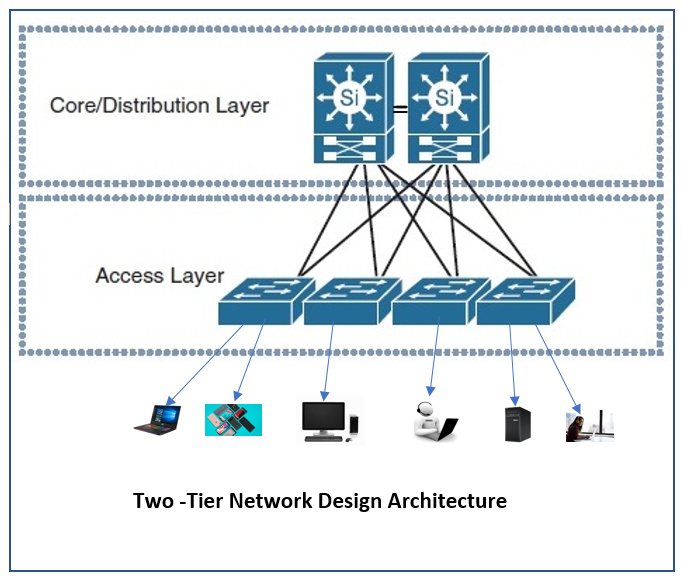
Scenario: In a small office network, a two-tier topology may consist of access switches connecting end-user devices (such as computers and printers) in the access layer. These access switches are then connected to a core switch or router, which provides connectivity to other networks or the internet.
2. Three-tier Network Topology
Three-tier network topology is a 3-layer architecture in which the network is divided into.
✓ Access layer
✓ Distribution layer
✓ Core layer
It provides better scalability, flexibility, and network segmentation compared to a two-tier design. Here is the three-tier network topology diagram for your reference.
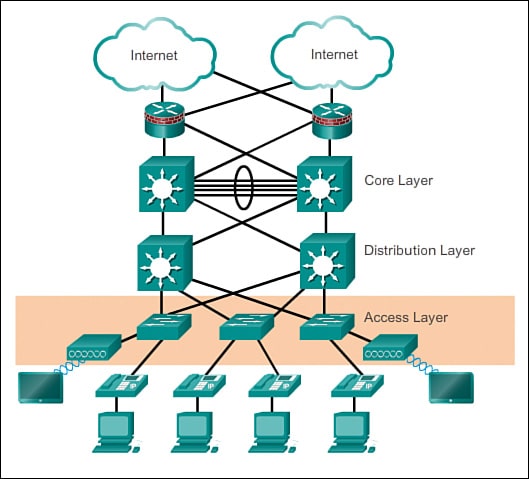
A typical hierarchical enterprise campus network design includes the following three layers:
Scenario: In an enterprise
network, a three-tier topology may consist of access switches in the access layer connecting end-user devices. These access switches are then connected to distribution switches in the distribution layer, which provide connectivity between access switches and aggregate traffic.
The distribution switches are further connected to core switches in the core layer, which handle high-speed backbone connections and connect to other networks.
3 Tier Architecture – Divide into 3 area. Core, Distribution and Access.
Core:
– In charge of fast routing, To get traffic as quickly as possible from distribution switch to another distribution switch.
– Gateway to Internet or other sites.
– The core layer also provides scalabily and fastconvergence.
Distribution:
– A multilayer sw capable doing routing. High capacity, High port speed and density.
– A layer that aggregates the server access layer, using stiches to segment workgroups and isolate network problems in a data center environment.
Access:
– We can use L2 switch because we are not based on routing but in mac address forwarding.
– A layer that is used to grant user access to network devices.
Cisco Portfolio switch which can be used in core and distribution layers of enterprise network as per the design requirements.These devices are :
3. Spine-Leaf Network Topology
The Spine-leaf network topology, also referred to as leaf-spine or Clos architecture, is a highly scalable and high-performance design frequently employed in large data centers or cloud environments. It facilitates low-latency and non-blocking communication among devices, ensuring efficient and rapid data transmission. Here is the spine and leaf network topology for your reference.
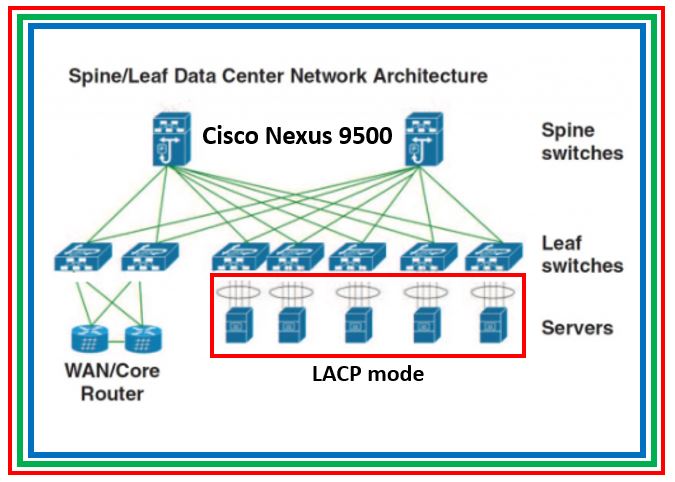
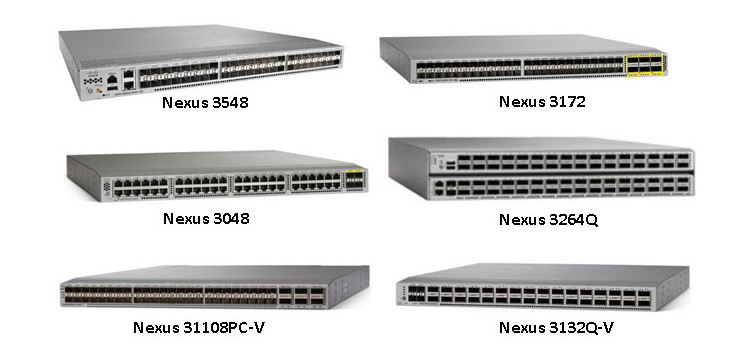
Scenario: In a data center, a spine-leaf topology may consist of leaf switches in the access layer connecting servers or storage devices. These leaf switches are then connected to spine switches in the spine layer, which provide connectivity between leaf switches and facilitate east-west traffic. This design ensures that any device in the network can reach any other device with minimal latency.
4. WAN Network Topology
WAN (Wide Area Network) topology refers to the network architecture used to interconnect geographically dispersed locations or branch offices. Here is the WAN topology in which branch offices, regional offices, remote offices, and data centers are connected. There can be thousands of branches which are connected to the WAN infrastructure.
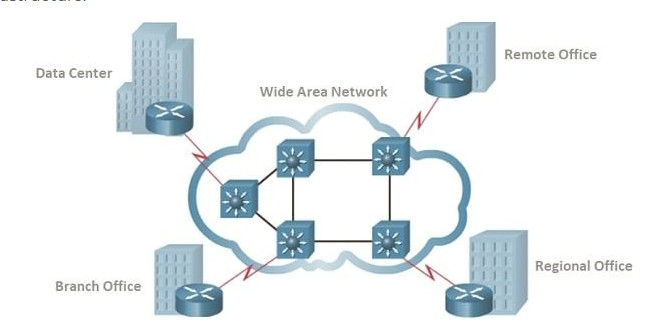
Scenario: In a multi-site organization, a WAN topology may involve multiple branch offices connected to a central headquarters. Each branch office typically has its own local area network (LAN) connected to a router, which establishes a connection to the WAN.
The WAN network can be implemented using technologies such as leased lines, MPLS (Multi-Protocol Label Switching), VPN (Virtual Private Network), or SD-WAN (Software-Defined Wide Area Network).
5. Small Office/Home Office (SOHO) Network Topology
SOHO network topology is generally used in a small office or a home office. Here is the typical SOHO network topology for your reference.
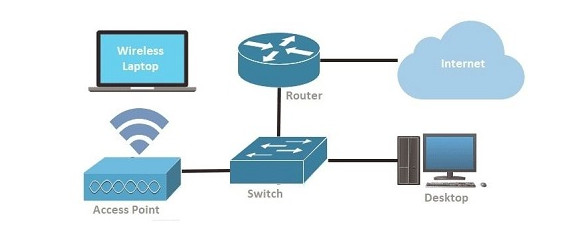
Scenario: In a home office setup, a SOHO topology may involve a single router or gateway device that connects to the internet service provider (ISP). The end-user devices such as laptops, phones, etc. can be connected to the router via wireless or desktop, and servers can also be connected to the router through wired